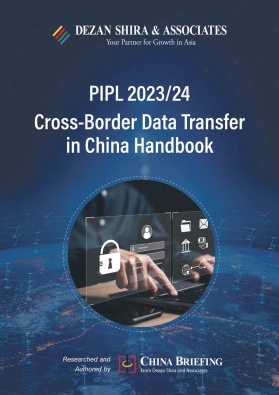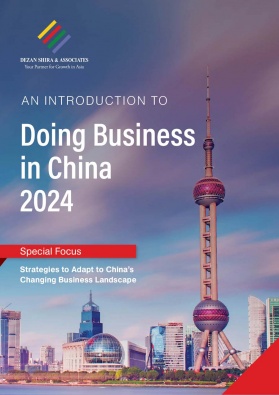China Extends 15% CIT Rate to Hetao Shenzhen-Hong Kong Science and Technology Innovation Cooperation Zone
Certain businesses operating within the Hetao Shenzhen-Hong Kong Science and Technology Innovation Cooperation Zone will be eligible for a 15 percent corporate income tax rate. This policy will be applied retroactively from January 1, 2023, to December 31, 2027. In this article, we elaborate on the eligibility criteria and elucidate China’s preferential CIT policy.
The Shenzhen Municipal Finance Bureau, State Administration of Taxation (STA), and Shenzhen Municipal Taxation Bureau have announced that the reduced 15 percent corporate income tax (CIT) rate for eligible businesses will be applied to certain areas of the Hetao Shenzhen-Hong Kong Science and Technology Innovation Cooperation Zone (HTCZ). The standard CIT rate in China is 25 percent.
Moreover, the authorities also announced a preferential individual income tax (IIT) policy for Hong Kong residents working in the Shenzhen portion of the HCTZ (hereinafter the “Shenzhen Park), in an effort to encourage talent exchange.
China has implemented a preferential CIT rate for eligible companies in several development zones around the country to encourage business development and investment in key industries. These zones include the Lingang New Area of the Shanghai Pilot Free Trade Zone (FTZ), the Hengqin-Guangdong-Macao In-Depth Cooperation Zone in Zhuhai, Guangdong, and the Guangzhou Nansha Economic and Technological Development Zone in Guangzhou, among others.
The reduced 15 percent CIT rate in the HTCZ will be available only to companies that meet certain requirements for eligible industries and operations within the specified area. The policy will be implemented retroactively from January 1, 2023, to December 31, 2027.
Preferential CIT policy
Where is the 15 percent CIT rate applicable?
The HTCZ is a collaborative innovation and technology zone straddling the border between Shenzhen and Hong Kong established as a joint initiative between Shenzhen and the Hong Kong Special Administrative Region in 2017.
The zone is split into two areas, one in Shenzhen and one in Hong Kong. The Shenzhen Park has an area of 3.02 square kilometers and includes the Huanggang Border Checkpoint and Futian Bonded Zone, both located in the Futian district of Shenzhen. Meanwhile, the Hong Kong portion covers a 0.87 square kilometer area.
The reduced 15 percent CIT rate will be applied in the Futian Free Trade Zone (FTZ), located within the Shenzhen Park of the HTCZ. The Futian FTZ covers an area of 1.35 square kilometers, starting from the Huanggang Port in the east, the Shenzhen River in the south, Xinzhou River in the west, and Ronghua Road in the north.
Who is eligible for the 15 percent CIT rate?
Only qualified companies that are operating in one of the encouraged industries within the Futian FTZ will be eligible for the reduced CIT rate.
Specifically, companies must meet the following conditions:
- At least 60 percent of its total income is derived from one of the encouraged industries in the Catalogue of Preferential Corporate Income Tax in the Shenzhen Park of the HTCZ (the “Catalog”); and
- Have “substantive operations” in the Futian FTZ.
To be classified as having “substantive operations” within the Futian FTZ, the actual managing organization of the company must be located within the Futian FTZ and exercise substantial and comprehensive management and control over the company’s production, operations, personnel, accounts, property, and so on.
For qualified companies, the 15 percent CIT rate will only apply to the income of their head office and branches that meet the conditions for substantive operations and industry operations.
The notice states that if the local tax authorities find it difficult to define whether the main business of a company falls within the scope of the catalog, they may request the relevant administrative departments of the Shenzhen Municipal People’s Government or authorized lower-level administrative departments to issue an opinion on the matter.
Catalog of encouraged industries
The catalog of encouraged industries includes 12 core fields of technology with a strong focus on research and development (R&D). The full catalog in Chinese can be downloaded from the official notice. Below we have summarized the eligible fields in English.
| Catalog of Preferential CIT in the Shenzhen Park of the HTCZ | ||
| Field | Core technology | Scope and content |
| Information science and technology |
Network and communication technology R&D and product pilot testing |
Network communication technology R&D and product pilot testing |
| R&D of visible light communication and optical computing technology | ||
| Semiconductor and integrated circuit technology R&D and product pilot testing |
Integrated circuit design, packaging testing, and pilot testing | |
| Integrated circuit key equipment, software R&D, and pilot testing | ||
| Advanced display technology R&D and verification | ||
| Microelectromechanical system R&D and pilot testing | ||
| R&D of new electronic components | ||
| Artificial intelligence (AI) and digital technology R&D and product pilot testing |
AI basic software, hardware, and intelligent terminal R&D and pilot testing | |
| R&D of general AI such as generative AI | ||
| AI testing services | ||
| R&D of virtual reality/augmented reality technology | ||
| Research, development, and testing of common robot technologies | ||
| R&D of key robot components | ||
| R&D of robot integrated system | ||
| Cloud computing technology R&D | ||
| Big data collection, processing, storage, information security, and high-performance computing technology R&D | ||
| R&D of precision instruments and equipment | R&D of precision instruments and equipment | |
| Blockchain and quantum information technology R&D | Blockchain technology R&D | |
| Quantum information technology R&D | ||
| Materials science and technology |
R&D of new material technology |
R&D and pilot testing of new biomedical medical materials |
| R&D of integrated circuit materials | ||
| R&D of optoelectronics and new electronic component materials | ||
| R&D of new energy materials | ||
| R&D of advanced metals, inorganic non-metals, polymers, and composite materials | ||
| Life science and technology
|
High-end medical device R&D, testing, and pilot testing | R&D, testing, and pilot testing of high-end medical devices such as instruments, reagents, and implantable interventional products |
| R&D, testing, and pilot trials of innovative drugs and vaccines | Biomedical R&D, testing and pilot testing of vaccines, gene therapy drugs, cell therapy drugs, innovative drugs and vectors for major diseases, etc. | |
| R&D, testing, and product pilot testing of key core biomedical technologies such as cells and genes
|
R&D, testing, and pilot testing of key core pharmaceutical technologies | |
| Synthetic biology technology R&D, testing, and product pilot testing | ||
| Cell and gene technology R&D, testing, and product pilot testing | ||
| Brain science and brain-inspired intelligence technology R&D | ||
| Operation of scientific and technological service agencies
|
Operation of scientific research institutions | Operation of laboratories, research centers, and research platforms |
| Operation of standardization organizations | Operation of standardization organizations | |
| Operation of technologically advanced outsourcing service organizations | Undertake the operation of technologically advanced outsourcing service organizations such as R&D outsourcing, business process outsourcing, and information technology outsourcing | |
Preferential IIT rate for Hong Kong residents in the HCTZ
In addition to the preferential CIT rate, the Shenzhen Municipal Finance Bureau, STA, and Shenzhen Municipal Taxation Bureau also announced a new preferential IIT policy for Hong Kong residents.
The preferential IIT policy applies to residents of Hong Kong who are working in the Shenzhen Park. Unlike the CIT policy, this policy is applicable across the whole of the Shenzhen Park, not just in one area within the park.
Under the policy, Hong Kong residents can be exempted from paying the portion of their IIT that exceeds the tax they would have paid in Hong Kong.
Both Hong Kong and the Chinese mainland implement progressive rates for IIT (or Salaries Tax, as it is known in Hong Kong). In Hong Kong, the rate ranges from 2 to 17 percent, whereas in the Chinese mainland, it ranges from 3 to 45 percent. This means Hong Kong residents who choose to work in the Chinese mainland may pay higher rates of IIT than if they had chosen to stay at home.
The preferential IIT policy in the HCTZ therefore removes this barrier to Hong Kong residents moving across the border to work.
Income eligible for the preferential IIT rate includes the comprehensive income derived within the Shenzhen Park (including wages, remuneration for labor services, royalties, and franchise royalties), business income, and talent subsidies identified by local governments.
Taxpayers can enjoy the preferential IIT policy when settling their annual individual income tax with the tax authorities in the Shenzhen Park.
Although this policy is available only to Hong Kong residents, some foreign nationals working in one of the nine mainland cities of the Guangdong-Hong Kong-Macao Greater Bay Area (GBA) – which includes Shenzhen – may already be eligible for an IIT subsidy. Under this program, high-end and in-demand talent working in one of the mainland cities in the GBA can have the portion of their IIT that exceeds the first 15 percent of their taxable income subsidized by the respective municipal government. This subsidy has been extended until the end of 2027.
For more information, see our article on the Greater Bay Area Preferential IIT Subsidy for Foreign Talent.
About Us
China Briefing is written and produced by Dezan Shira & Associates. The practice assists foreign investors into China and has done so since 1992 through offices in Beijing, Tianjin, Dalian, Qingdao, Shanghai, Hangzhou, Ningbo, Suzhou, Guangzhou, Dongguan, Zhongshan, Shenzhen, and Hong Kong. Please contact the firm for assistance in China at china@dezshira.com.
Dezan Shira & Associates also has offices in Vietnam, Indonesia, Singapore, United States, Germany, Italy, India, and Dubai (UAE). We also have partner firms assisting foreign investors in The Philippines, Malaysia, Thailand, Bangladesh.
- Previous Article China Monthly Tax Brief: January 2024
- Next Article Investing in China’s Anti-Aging Market: Trends and Opportunities








